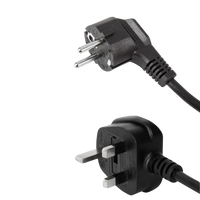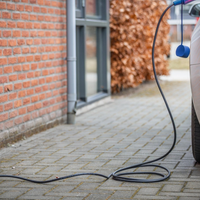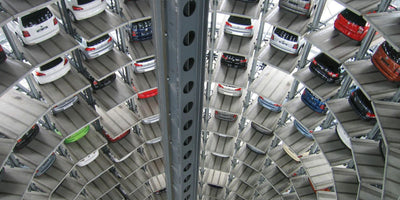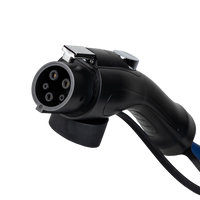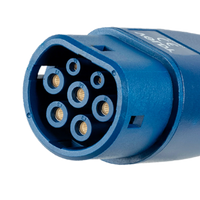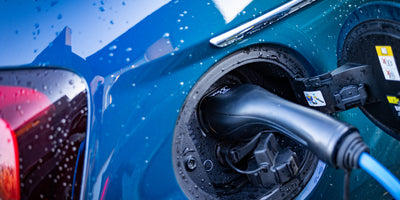Have you ever wondered if it's possible to charge your electric car through a normal outlet? With the growing popularity of electric vehicles (EVs), this is a question on many people's minds. The answer may be surprising, but yes, in many cases it is indeed possible to charge your EV at home without a charging station, simply by using a standard outlet. Let's take a look at the basics of charging your car through an outlet.
Charging your EV through a regular wall outlet
You have two options if you want to charge your electric car at home: a private charging station or through the wall outlet. Although charging via wall socket is often seen as an emergency solution, it can be perfectly adequate in some situations. However, you will need a special EV charging cable to 230V household outlet, or granny charger. In fact, most EV and PHEV are equipped with such a charging cable.
Socket versus charging station
If you charge daily for 12 hours at 2.3 kW, you can charge 27.6 kWh through the wall socket. With an average electric car, that's enough for about 125 to 150 kilometers. Side note is that most car brands equip their EV and PHEV with a granny charger that charges up to 2.3kW maximum. At Voldt, however, you can also find granny chargers that can charge up to 2.8kW. With such charging power, you can quickly charge 40.7kWh in 12 hours. Which works out to about 190 kilometers or 300 miles.
If this is sufficient for your car use, instead of a charging station, consider installing (or having installed) an outdoor outlet on a separate group and purchasing a good 230v charger. This is considerably cheaper than having a charging station installed.
A charging station quickly costs between €1,000 and €2,500, depending on the type of charging point and the amount of installation work. It is a substantial investment, but once installed you can achieve charging speeds of up to 11 kW or even higher.
Separate group and suitable charging cables
Caution: do not simply plug your electric car into the first power outlet you find, especially when other power consumers are connected to the same group! Use a separate and properly fused group in the meter cupboard (according to the NEN1010 standard) to charge your car. In any case, make sure that after connecting the car to the socket you do not turn on any other large power consumers (such as a washing machine), the fuses will fly out.
When charging from an outlet, use an appropriate charging cable with a charge protector, also called a mode 2 charger. This communicates with the car and features protection against overvoltage, undervoltage, leakage current and overheating.
Many electric cars come with a 230v charging cable with a maximum charging current of 10A, giving a charging power of 2.3 kW. There are also 230v charging cables where you can set the maximum charging current between 10 and 16A to adjust the charging power and charge up to 3.7 kW.
Safety and costs
Unplug the charger when you have finished charging to prevent standby power and overheating. Never use extension cords!
Research by the ANWB shows that charging via the wall socket can lead to as much as thirty percent higher charging costs. With a dynamic energy contract, you can tailor charging sessions to the lowest hourly rates to save.
Advantages and disadvantages of charging through a normal outlet
Charging your electric car through a normal outlet has both advantages and disadvantages. Let's look at the main points to consider.
Costs of charging at home
A big advantage of charging from a wall socket is that you don't have the extra cost of buying a charging station or charging card. You simply use the standard included charging cable. However, due to the longer charging time and higher power loss, charging through the wall socket can end up being more expensive than at a charging station. With today's high electricity rates, you quickly pay €0.65 per kWh or more, while public charging stations can charge at even lower rates.

Time and efficiency
Charging via a wall socket is a lot slower than at a charging station. With a normal socket you can charge up to 3.7 kW, while a charging station reaches speeds up to 11 kW or even higher. To drive 100 kilometers, you need at least 5 to 8 hours of charging via the socket, while with a charging station this can be done within 2 hours. Moreover, slow charging leads to more power loss, up to 30% more than with a modern charging station. Of course, this does depend on the quality of your charging cable!
Charge loss and flow problems
The slower you charge, the more power is lost to things other than range. This is due to:
- Cabling: Older cabling in particular causes a lot of power loss, up to 4%. So purchase a high-quality Mobile charging cable.
- In-car systems: Various control units that consume power may be active during charging.
- Temperature: Depending on make, model and temperature, cooling or heating of the battery may be active during charging.
To safely charge through the wall socket, it is recommended to do so through a separate fused group to avoid overloading. We do not recommend using an extension cord. Do you need more length anyway? At Voldt you can find mobile chargers up to 15 meters! Is that still not enough? Then contact us!
If you do want to use an extension cord, use one of the highest quality with high dust and water resistance and good insulation.

